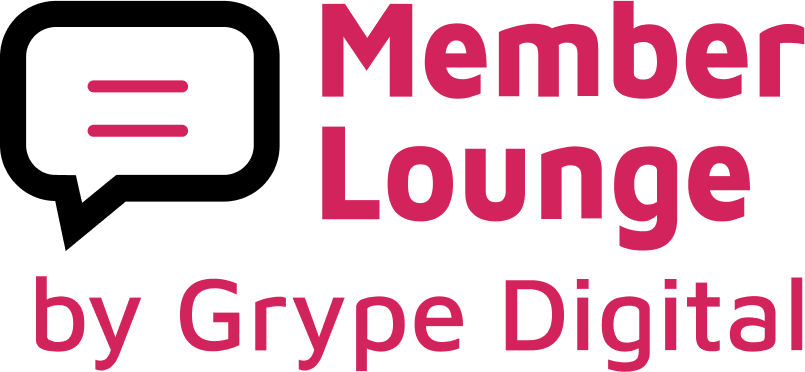Website accessibility is an important concept that is becoming increasingly commonplace in the zeitgeist. In the spirit of this important movement, we invited web accessibility specialist, author, and UN special advisor, David Berman on our podcast to share ideas with associations about accessibility for their websites and member portals. David’s inspired outlook and practical suggestions are recapped in this blog to help associations make their member benefits and digital offerings more inclusive.
Accessibility Affects Us All
David Berman’s key message is that all of us are affected by disability in some measure. We all have loved ones with a disability, and at some point in our own lives we may live with a temporary deficit; an accident that affects our mobility, macular degeneration — the possibilities are endless. We live in a generation that has the means and ability to make the world, and the World Wide Web accommodates a wide spectrum of abilities and makes it accessible to all.
David Berman’s key message is that all of us are affected by disability in some measure. Furthermore, we all have loved ones with a disability, and at some point in our own lives, we may live with a temporary deficit; an accident that affects our mobility, macular degeneration — the possibilities are endless. Additionally, we live in a generation that has the means and ability to make the world, and the World Wide Web accommodates a wide spectrum of abilities and makes it accessible to all
An interesting example would be the curb cuts in the sidewalks for wheelchairs; this now helps people push strollers, roller skaters, and anyone pulling groceries behind them. Another example would be voice recognition software, or voice-to-text; now everyone can send audio messages without having to type.
How Accessibility Accommodations Helps with Member Engagement and Retention
David brings powerful arguments that when we design a world for the extremes (i.e. for people with disabilities, and keeping a wide continuum of disabilities in mind), everyone benefits By making your membership portal and member benefits more accessible, you open the door to more members being able to join and participate in your member benefits. Website accessibility allows for greater member engagement, member satisfaction, and member retention
Budget is King
Most associations are on a strict budget with limited staff. Approval from your board to green-light building a new inclusive website and member portal may be a while away. If a new website and member portal are on the table, of course, the ideal scenario is to conceive your website and member portal design with accessibility in mind.
For those associating website accessibility with a high cost and no return on investment, David encourages you to reconsider. David emphasizes that associations won’t lose out financially by making their benefits inclusive. On the contrary, flexibility and inclusivity would decrease member churn among those with deficits and increase member revenue by serving a broader audience
Until the budget for a new site and portal is on the table, this blog outlines 8 best practices to make your current website and member portal more accessible.
8 Ways to Make Your Website and Member Portal More Accessible
Here are the accessibility functionalities David suggests:
1. Is the Focus Visible on Your Website and Member Portal? (aka Tabbing)
Open your website and member portal. Hit the tab button. Hit it again, and again. What you are doing is replicating the experience of someone trying to access your website who is sighted but has mobility issues. Ideally, hitting the tab button should bring focus to links and CTA buttons on the page, jumping from one to the other with each click of the tab button. This functionality assists a sighted person with mobility issues to navigate the site and member portal and engage with the content in a meaningful way. Additionally, if the focus isn’t visible, it takes two minutes of code to fix this.
Suggested Action Item
Test Focus Visibility (aka tabbing) on your site and member portal. If it doesn’t work, make a call to your developers to make this meaningful quick fix.
2. Does Your Website and Member Portal Pass a Colour Contrast Test?
There are free tools online that analyze the color contrasts between the foreground, background, and CTA (call to action) buttons on your site and member portal. Moreover, choose colors with sufficient color contrast to assist individuals with a color deficit or limited sight. This way, they can more easily differentiate the content on your site and member portal
How much contrast do you need? Good question. Let’s go a little deeper into web accessibility standards: Notably, the WCAG (Web Compliance Accessibility Guidelines) is the only global standard for web accessibility. Published by the W3C (World Wide Web Consortium), there are three main accessibility standards: A, AA, and AAA. Moreover, 2.0 AA is the most quoted and referenced set of standards with 38 success criteria. 2.1 AA is a more recent update of the AA success criteria, adding an additional 12 criteria, to account for innovations in technology, such as touch screens. The European Union, for instance, has adopted the 2.1 AA standard, and this is the most mainstream standard.
If that was too much, that’s okay! Just put in your pocket “2.1 AA” and hand that to your developer!
Suggested Action Item
Run your website and member portal’s color scheme through a free color contrast analyzer tool online to ensure you meet the AA standard of a 4.5:1 color contrast ratio.
3. Do You Provide Audio Descriptions of Your Videos?
Adding the audio description field and recording the audio clips for your videos will take a little extra effort. As a reward for your effort, however, all of your media becomes so much more searchable! The SEO of your site and member portal will rise and help bring organic traffic to your site and member portal — another great example of how accessibility features benefit everyone.
Suggested Action Item
Add creating audio descriptions to your process of developing future videos.
4. Do you Provide Captions on Your Videos?
Artificial Intelligence (AI) technology is making it easier and more affordable to provide captions to your videos. This has already become somewhat of an industry standard for videos shared to social media where users can read along while watching videos with the audio turned off. This is a great example of how doing something to help an extreme user benefits everyone.
Suggested Action Item
Add captions to your video editing process for any future videos you produce for your site and member portal.
Download our handy Web Accessibility Checklist & Worksheet that lists and recaps the suggestions in this blog for your easy reference.
5. Do your web forms comply with WCAG Web Standards?
All of us have had the experience of fighting with a webform; for a doctor’s visit, to register for something, to buy something, you name it. By having your web forms comply with WCAG accessibility standards everyone wins because it reduces form abandonment. Creating quality, usable forms will reduce form abandonment, and get your association the leads and registration you want.
Suggested Action Item
Confirm that your web forms comply with WCAG Web Standards.
6. Are Your Publicly Shared Documents in an Accessible Format?
As part of your member benefits or even the lead generation on your public website, you offer documents, certificates, and PDFs. Notably, are these documents available in an accessible format? Additionally, use the WCAG guidelines for type size, color contrast, and other success criteria. Moreover, use this for your presentations, webinar slides, and event handouts. Furthermore, this will make your presentations and events more accessible — and help everyone who left their glasses at home, too!”
Suggested Action Item
Confirm that your documents, lead magnets, and presentation slides meet WCAG Accessibility Standards.
7. Have you Performed Accessibility Testing on Your Member Portal?
This is the most involved task that you’ll find on this list. Notably, taking the time to hire a consultant to perform accessibility testing on your association’s website and member portal will help your association identify the gaps that need to be addressed. Additionally, at the least, you can get to any low-hanging fruit that can easily be changed.
Suggested Action Item
Contact a website accessibility consultant to perform usability testing for your site and member portal.
8. Is Accessibility a Priority at Your Association?
Disability is more common than you may think. Therefore, we encourage you to question the assumption that your association’s audience doesn’t have a sizeable percentage of individuals with some level of disability.
Moreover, we live in a world where 10% of people live with a visible disability, and countless others with a hidden, or unseen, disability. Additionally, with 50% of people over 50 having a decreased sense of sight that only decreases with age, and 10% of males are colorblind, the list of accessibility needs only grows.
When we internalize that disability is all around us, we can be proactive to make it part of our association’s value system to make decisions that are inclusive of web accessibility.
Suggested Action Item
Discuss with your board members and advisory team the idea of making accessibility a core value of your association. Additionally, include it in your future decision-making processes.
Download our handy Web Accessibility Checklist & Worksheet that lists and recaps the suggestions in this blog for your easy reference.
Before the Fact versus After the Fact
The idealism behind bringing in a consultant for usability testing is commendable. However, be aware that remediating your current website and member portal can be costly and yield only mediocre results. Think of it as retrofitting an old building with an elevator compared to designing a new building with accessibility from the start.
That being said, the accessibility features listed above can more or less be easily incorporated into your association’s website. Adopting new and improved standards may feel clunky at first, but the more you use it the more natural it will feel.
Feel Empowered to Make a Positive Change for Tangible Wins for Your Association
Every website and member portal can be made more accessible. Notably, this benefits all members, not just those with an obvious visible disability, and your association as a whole as well. Moreover, it’s interesting that practicing inclusivity, or ‘doing the right thing,’ can improve your website’s SEO. It also reduces form abandonment and enhances access to benefits for both existing and potential members. Win-win-win!
Get the Green Light for a New Website and Member Portal
Your association’s team and members may desire a new website or member portal, but the budget hasn’t been approved. Emphasizing the value of an inclusive member portal could be the push your board needs to approve the budget. This may open the door to sponsors who share this value.
It’s not just a value proposition; it’s also about financial benefits. Building an inclusive site and member portal from the start enhances the experience for all your members. It also attracts new members who might otherwise be unable to participate. Web accessibility converts to increased member satisfaction, member engagement, and member retention.
Looking to Engage More Members?
Book a call with us to talk about making your website engaging to a wider audience!





